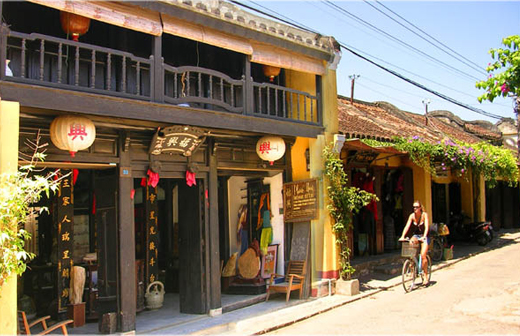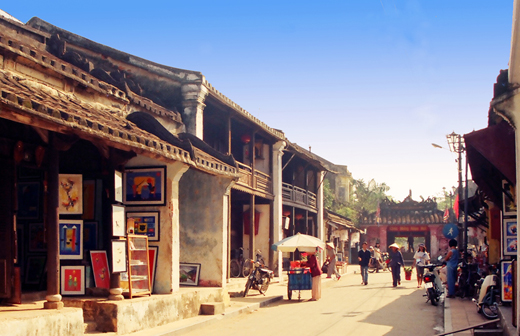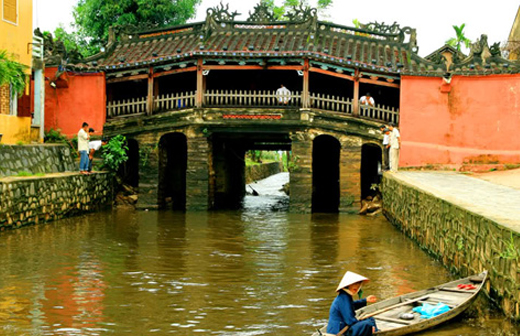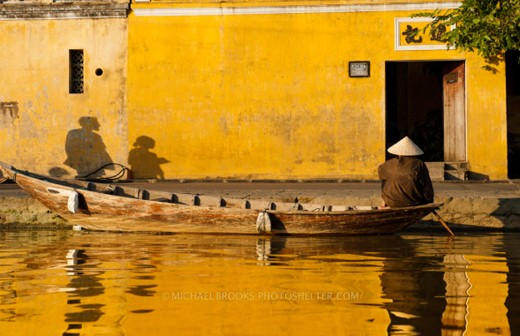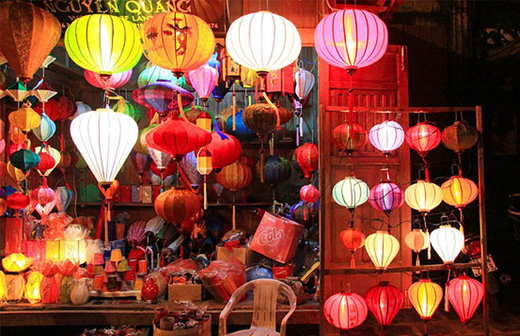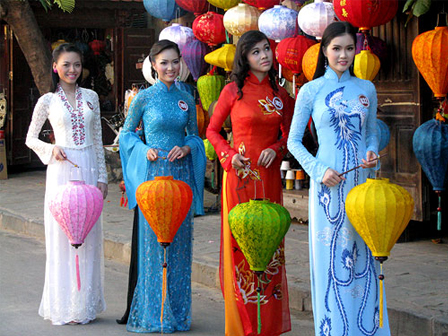Hoian
Named World Heritage by UNESCO in 1999, Hoian is an interesting cultural destination of Vietnam. Hoian is both a coastal town on the central coast of Vietnam and a river city with the beautiful rivers such as Thu Bon - Vu Gia, Truong Giang, Co Co....The picturesque town of Hoi An was one of the most prosperous ports of Vietnam and one of the main trading centers in Southeast Asia during the 16th and 17th centuries. Since the end of the 16th century and during the Nguyen dynasty, many merchants from Japan, Portugal, the Netherlands, China, Spain ... installed trading posts here.
For many centuries, Hoi An was a compulsory stopover for all merchant ships in Europe and Asia that were passing through the region, as were Macao and Malacca. The city has thus undergone multiple architectural influences from China, Japan and France. Today, Hoi An counts more than 800 buildings classified historical monuments. Classified as a World Heritage Site by UNESCO, its city center is close to traffic by car.
Hoi An city is also considered one of the 25 gastronomic destinations in the world. It is so interesting to sit on a terrace in front of an old house and see the daily life of the locals as if we were in another time while tasting salted cakes packed in plant leaves like banh xeo Hoi An (a kind of salty pancakes), banh vac (sticky rice), and other typical dishes of the region such as Hoanh Thanh, chicken rice....
ATTRACTIVE SITES IN HOIAN
Japanese bridge - the symbol of Hoi An town, is an architectural monument built by Japanese merchants who came there to trade. This arc-shaped bridge was built in the middle of the 16th century with curved wooden planks to span the canal that flows into Hoai River. The bridge has a curved awning which was carved with beautiful and fine motifs. It is attached to the legend of Cu - an aquatic monster whose head is in India, his body in Vietnam and his tail in Japan; And every time it moves, it creates floods, earthquakes in these three places. That is why there is a small temple making the cult to the genius Bac De Tran Vu, a genius who protects the city against storms and floods.
Quan Thang ancient house, which is over 150 years old, is now considered one of the most beautiful old houses in Hoi An. It has a Chinese architecture and is very well preserved in its style, shape, decorations. The architecture and refined and lively sculptures of this house were made by artists from Kim Bong Village- Hoi An town.
Tan Ky ancient house, which is 200 years old, has received a certificate of historical and cultural monument of the country. Its parallelepiped shape is typical of the architecture of the terraced houses in Hoi An city. This house is composed of different rooms, each with its function; The facade is used for trade, the rear is intended to receive and ship goods by river. Its decoration is in precious wood carved with refinement.
Quan Am Phat Tu Minh Huong pagoda is the last remaining pagoda in Hoi An ancient town, and it is worshiped in Kouan Yin Quan The Am Bo Tat. This pagoda preserves almost all the sculpted works made by artists of Kim Bong village - Hoi An.
Climate
There are two distinct seasons in Hoian: the rainy season from August to December and the dry season from January to July. There are sometimes waves of cold in winter, but not prolonged.
The best time to visit Hoian is from January to July, during this time there is little rain and pleasant temperature. For those who prefer the beach, the period from May to July is ideal.
DISTANCE BETWEEN HOIAN AND OTHER REGIONS
| From | To | Distance (km) | Means of transport | Duration of transport | Road condition |
| Hoian | Hanoi | 794 km | Plane | 1h20 | |
| Hoian | Hue | 140km | Car | 4h | Good |
| Hoian | Danang | 30 km | Car | ~1h | Good |
| Hoian | Buon Ma Thuot | 500 km | Plane | 1h00 | |
| Hoian | Nha Trang | 500 km | Plane | 1h10 | |
| Hoian | Saigon | 910 km | Plane | 1h25 |
Hallo Vietnam Travel
Email: info@hallo-travel.com
Tel: +84(24) 66 55 44 99
Address: No 10-TT6.2 Lexington Estate, Thinh Liet, Hoang Mai Dist, Hanoi, Vietnam
Tel: +84(24) 66 55 44 99
Address: No 10-TT6.2 Lexington Estate, Thinh Liet, Hoang Mai Dist, Hanoi, Vietnam
